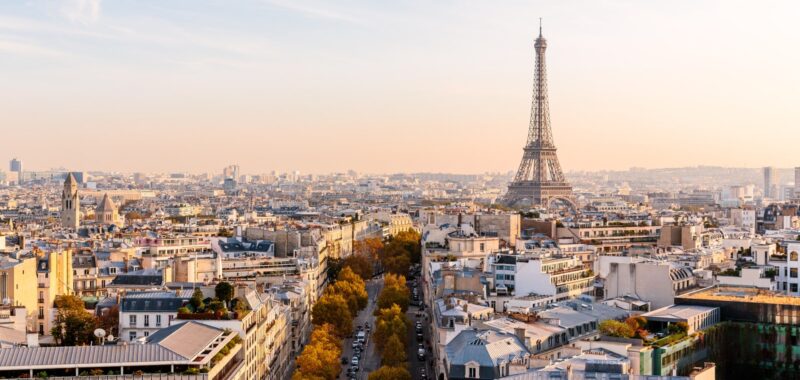The Eiffel Tower, one of the most visited landmarks in the world today, was once the tallest structure ever built too. At the time of its completion in 1889, its 984 feet (or 300 meters) far surpassed the height of the reigning tallest structure, the Washington Monument, which rises 554.5 feet (or 169 meters). And though the Eiffel Tower only held the title of tallest for 41 years—the Chrysler Building in New York surpassed it in 1929—its cultural influence has only grown over time.
“It’s become the symbol of Paris, and of France as well,” says Savin Yeatman-Eiffel, a great-great-great-grandson of Gustave Eiffel, the engineer behind the tower. “There were very strong critics until the beginning of the 20th century, but there was never a lot of protest from normal Parisians. They would happily climb on top of it. It gradually became more and more part of the landscape, and it became very hard to imagine Paris without the Eiffel Tower.”
Since Paris is such a low-slung city (there was a building height limit of about 115 feet, or 35 meters, in place until the 1960s), the Eiffel Tower can be spotted from almost anywhere in the French capital. Its wrought-iron lattice construction—which was actually a mathematical choice, not an aesthetic one—sticks out proudly along the skyline. “You can see it from a lot of places,” Yeatman-Eiffel adds. “It’s a love story between Parisians and the Eiffel Tower.”
Here, Yeatman-Eiffel, who is the vice president of the Association des Descendants de Gustave Eiffel, the documentarian behind Eiffel’s Race to the Top, and the curator of the Eiffel: Toujours Plus Haut exhibit, shares more about this iconic structure.
Where is the Eiffel Tower located?
The Eiffel Tower (or the Tour Eiffel in French) is located in the Champ de Mars, a big public park on the banks of the Seine River, in the 7th arrondissement of Paris. It’s not far from Musée du Quai Branly, Musée Rodin, and Musée d’Orsay. Right across the river, another large park called Jardins du Trocadéro offers more green space and a beautiful view of the structure.
What is the history of the construction of the Eiffel Tower?
The Eiffel Tower originated with a global desire to reach 1,000 feet. “There was a race for heights, a race to be the highest tower in the world that started at the beginning of the 19th century,” says Yeatman-Eiffel. “There were several projects [that aimed to be 1,000 feet] before, during, and after the Eiffel Tower that never got completed.”

